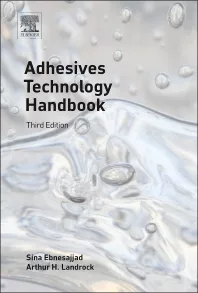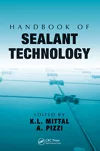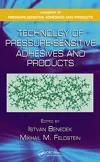5 Trends Impacting the Adhesive and Sealant Industry
The ASC has identified multiple trends and responded with Convention and Training Academy programming.

Jump to:
- Chemicals Scrutiny
- Sustainability = Data
- Energy Efficiency = Market Opportunity
- Acquisitions Define Market Position
- People and Training Matter
The Adhesive and Sealant Council (ASC) has targeted five trends that it sees impacting the industry. The adhesive and sealant community will discuss these types of issues and opportunities at the ASC Fall Convention and Expo, which will be held October 21-23 in Minneapolis (view a floor plan and list of exhibitors).
1. Chemicals Scrutiny
The adhesives and sealants sector has entered into an era of intense chemicals scrutiny. California’s Green Chemistry Act would require all companies to assess alternatives if they sold a product that included a chemical of concern, while the U.S. Green Building Council’s LEED Version 4 requires a company to share chemistry information via software that was originally intended for R&D efforts.
During the next year, Environmental Canada, the U.S. Environmental Protection Agency, and South Coast Air Quality Management District will all be looking either at the chemicals our industry uses or the percentage of volatile organic compounds (VOCs) in specific product categories. In the interim, Congress will continue to wrestle with the reform of the Toxic Substances Control Act, with the hope of finally determining which of those untested 80,000 chemicals need to be scrutinized while maintaining the protection of Confidential Business Information that is critical to the dominance of the U.S. chemical industry.
2. Sustainability = Data
Sustainability is a market driver that has allowed our industry to illustrate how our technologies enable sustainability. We provide the adhesives that can be used to lightweight vehicles, as well as the sealants that can be used to air- and water-seal buildings, to use two examples.
Increasingly, end users are looking for more clarity on what impact their suppliers have on the environment. To that end, they are asking for their partners to provide either an Environmental Product Declaration (EPD) or Health Product Declaration (HPD). In both cases, companies will likely need data that provides lifecycle assessment (LCA), and will probably certify some of the Type III EPDs and HPDs for major products that are integral to their company’s growth strategies.
The ASC is responding to this trend in partnership with the ASTM by collaborating to develop Product Category Rules (PCRs). PCRs can be used by industry to develop LCAs, which would then be turned into Type III EPDs and HPDs. Four speakers at the ASC Fall Convention will address this subject.
The council is also in the planning stages of holding our second Sustainability Summit in July 2014. If your company wants to guide the focus of this summit, consider joining the Technical Committee. This is the group that ensures that what is created is 100% member focused.
3. Energy Efficiency = Market Opportunity
Solar energy, wind energy, federal miles-per-gallon mandates, light rail systems—these are all real business opportunities for the industry. In fact, these initiatives are part of the reason why sales of adhesives and sealants are forecast to grow 3% in North America over the next three years. Our industry produces the enabling technologies that can ensure that solar panels work, wind energy blades stay online, and cars can reach 50 mpg. We are also part of the solutions for high-speed trains that are made with new-age composite materials. And with the building and construction industry coming back, it’s time to focus on this market opportunity.
Solar energy, wind energy, federal miles-per-gallon mandates, light rail systems—these are all real business opportunities for the industry. In fact, these initiatives are part of the reason why sales of adhesives and sealants are forecast to grow 3% in North America over the next three years. |
The ASC Fall Convention will feature end users and influencers from Pella, Simpson Gumpertz & Heger, Construction Instruction and Kingspan Panels, all offering attendees a glimpse into what they want from their adhesive and sealant supply chain.
4. Acquisitions Define Market Position
A few years ago, Henkel purchased National Starch, then H.B. Fuller purchased Forbo; meanwhile, Royal Adhesives was purchasing Para-Chem, Clifton, and ADCO. We’re clearly in a cycle of acquisitions as a growth strategy, but does this mean every company will be “rolled up?” My association experience says that three types of companies typically operate successfully within any industry:
• Commodity companies that provide volume and compete on price as a strong value driver
• Niche companies that provide a unique product and focus almost exclusively on that niche
• Total systems companies that work to provide either a full array of technologies or the full suite of technologies to make a system work (including adhesives/sealants, equipment and materials)
The ASC has every type of company within its membership, and each has this unifying philosophy: We may operate differently in the marketplace, but we join and support the ASC because we want this marketplace to have regulations that are reasonable—and we want training for our teams that touch on all aspects of the marketplace dynamics.
5. People and Training Matter
We often read about how technology transforms industries, solves challenges, provides answers, and makes everything more efficient and better; it’s as if technology itself does everything. Reading the press releases and market positioning of these products always reminds me of my high school English literature classes and reading Jack London’s Call of the Wild, which heralded the natural vs. the technologies that were transforming the early 1900s. Technology is great, but people are crucial, since they are either creating the technology or using it to innovate.
People require training to ensure they are at the top of their game. That’s why the ASC created the Training Academy, a series of webinars designed to offer the basics of formulation and our industry’s technologies. It’s also why we have five short courses dedicated to the basic technologies. In addition, we have an Advanced Technology Track at our Convention, where attendees can keep up with the latest research in our sector.
Learn More
These five trends are some of the value drivers impacting our industry. You’ll hear a lot more about them when you attend the upcoming ASC Fall Convention.
For additional information or to register, visit www.ascouncil.org.
Listen to our podcast with keynote speaker John Felmy of the American Petroleum Institute!
Looking for a reprint of this article?
From high-res PDFs to custom plaques, order your copy today!








